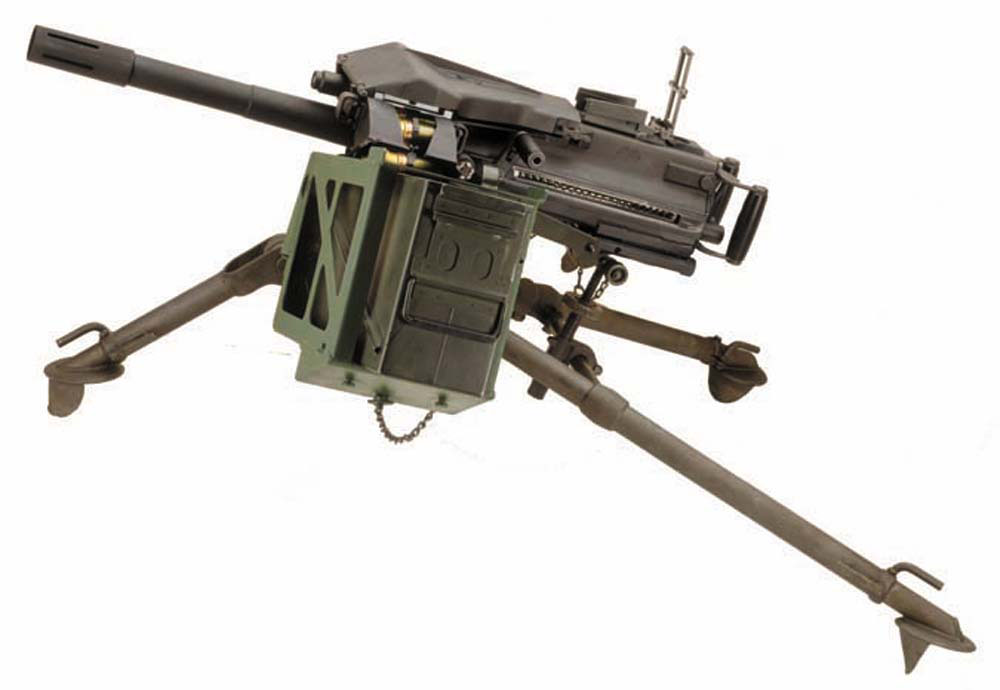Hello ladies and gents this is the viking telling you that today we are talking about

 The Mk 19 can launch its grenade at a maximum distance of 2,212 meters (2,419 yd), though its effective range to a point target is about 1,500 meters (1,600 yd), since the large rear leaf sight is only graduated as far. The nearest safe distance to launch the grenade is 310 meters in training and 75 meters in combat. Though the Mk 19 has a flash suppressor, it serves only to save the eyesight of its operator, not concealing the weapon's position. For night operation, a picatinny rail quadrant sight can be added for thermal and night vision optics.
The Mk 19 can launch its grenade at a maximum distance of 2,212 meters (2,419 yd), though its effective range to a point target is about 1,500 meters (1,600 yd), since the large rear leaf sight is only graduated as far. The nearest safe distance to launch the grenade is 310 meters in training and 75 meters in combat. Though the Mk 19 has a flash suppressor, it serves only to save the eyesight of its operator, not concealing the weapon's position. For night operation, a picatinny rail quadrant sight can be added for thermal and night vision optics.
MK19 Grenade Machine Gun

The Mk 19 grenade launcher (pronounced Mark 19) is an American 40 mm belt-fed automatic grenade launcher that was first developed during the Vietnam War. The first model (Mod 0) in 1966 was determined to be unreliable and unsafe, but a total of six Mod 1 launchers were successfully tested on U.S. Navy riverine patrol craft in the Mekong Delta in 1972. The Navy made further improvements to the weapon, resulting in the Mod 3 in 1976. The Mod 3 was adopted by the U.S. Army in 1983 and remains in service to the present day
The Mk 19 is a belt-fed, blowback-operated, air-cooled, crew-served, fully automatic weapon that is designed not to cook off. It fires 40 mm grenades at a cyclic rate of 325 to 375 rounds per minute, giving a practical rate of fire of 60 rounds per minute (rapid) and 40 rounds per minute (sustained). The weapon operates on the blowback principle, which uses the chamber pressure from each fired round to load and re-cock the weapon.
The Mk 19A is a man-portable crew-served weapon that can fire from a tripod-mounted position or from a vehicle mount, with the latter being the preferred method, as the weapon alone weighs 77.6 pounds (35.2 kg). The primary ammunition for it is the high-explosive dual-purpose M430 grenade. On impact, the grenade can kill anyone within a radius of five meters, and wound them within a radius of 15 meters
It can also punch through 2 inches (5.1 cm) of rolled homogeneous armor with a direct hit (0-degree obliquity), which means it can penetrate most infantry fighting vehicles and armored personnel carriers. It is especially effective when used against enemy infantry formations. The ammunition comes in cans that hold a 32- or 48-grenade belt weighing 42 and 60 pounds (19 and 27 kg), respectively. Due to its low recoil and comparatively light weight, it has been adapted for use on many different platforms, including small attack boats, fast attack vehicles such as the Humvee (HMMWV), AAV and Stryker, military jeeps, and a large variety of naval mounts.
The Mk 19 automatic grenade launcher replaced the earlier Mk 18 hand-cranked multiple grenade launcher. The 40 mm ammunition used (40×53 mm) is not interchangeable with that used in the M203 (40×46 mm). The M203 ammunition develops a lower chamber pressure, and resultant lower muzzle velocity and range, compared to ammunition loaded for the Mk 19. The Mk 19 fires from an open bolt. The rounds are mechanically fed onto the bolt face with the pull of the charging handles. When the trigger is pressed, the bolt closes, and the firing pin is released. The recoil blows back the bolt, feeds a new round onto the bolt face, which pushes the expended casing off the bolt face.
In November 2014, General Dynamics entered into an agreement with Advanced Material Engineering Pte Ltd, a subsidiary of Singapore Technologies Kinetics, to manufacture 40 mm high-velocity airburst ammunition for the U.S. military. The 40 mm airburst grenade uses a programmable, time-based fuse that computes and programs the detonation time into it, which counts down once fired to zero to detonate at the intended target point. The airburst ammunition is compatible with the Mk 19, which would give it greater effectiveness and lethality, particularly against concealed and defilade targets.
The U.S. Army plans to introduce several new features to the Mk 19 in an upgrade package that could be introduced by late 2017. Initiatives include: increased muzzle velocity through a less resistant barrel; increased cyclic rate from an improved profile for the vertical cam to reduce the force needed to charge the weapon; enhancing reliability with a redesigned round-positioning block to decrease the chance of misfires; increased durability and shortened re-assembly time after maintenance from a new cocking cam and lever; and an updated mechanical sight utilizing up-to-date ammunition ballistic data to aid accuracy.
And as always have a chilled day from the viking
Comments
Post a Comment